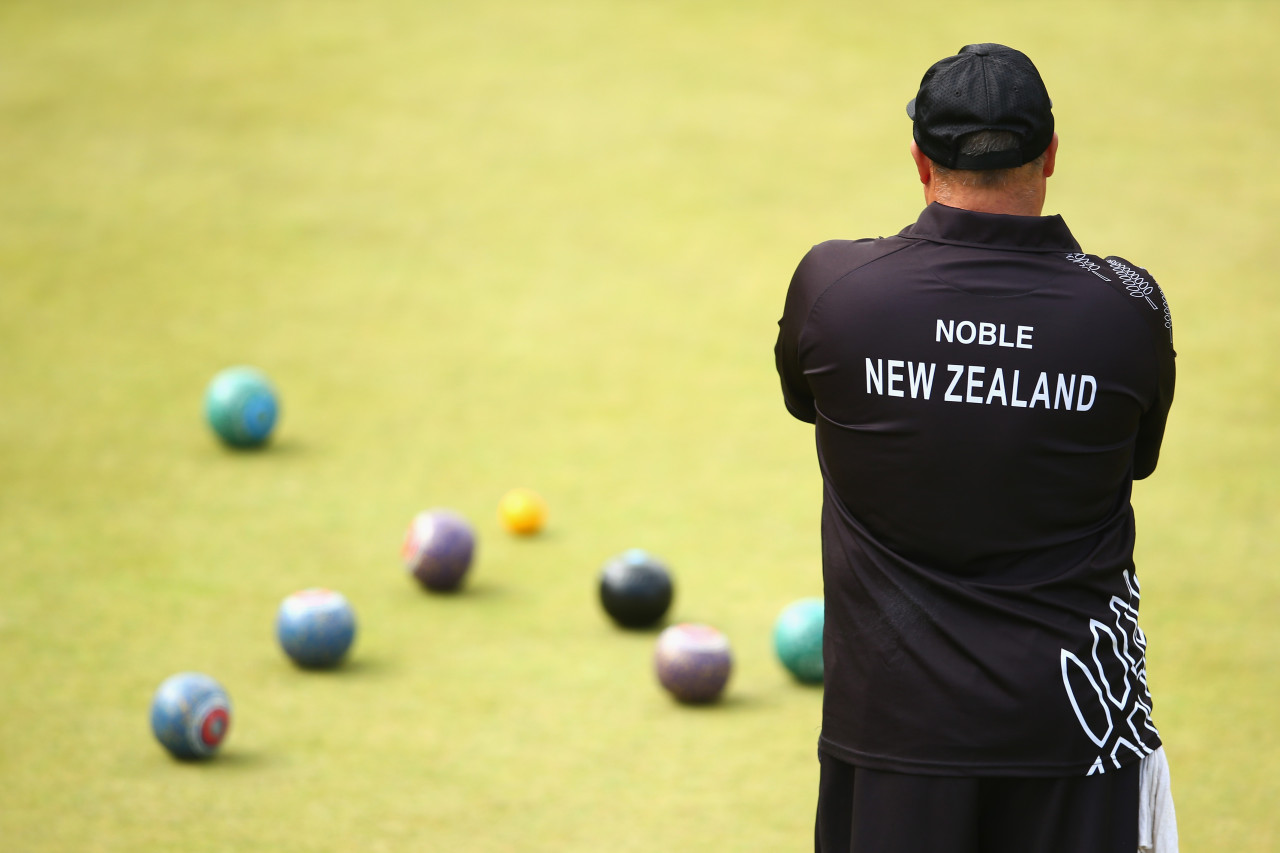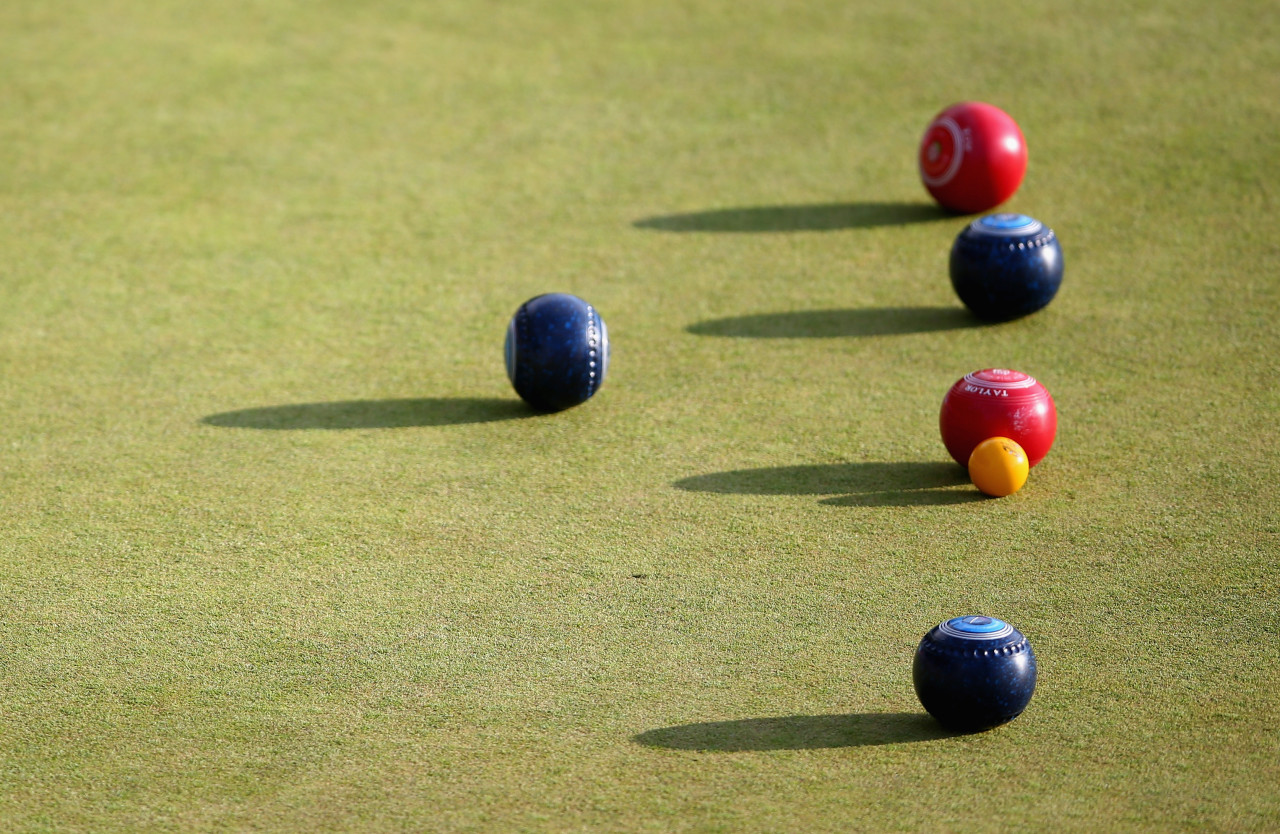Advertisement
Ancient Game Of Lawn Bowls Adds New Chapter In Glasgow
One sports cliché to make it far beyond the world of sports is “The ball’s in your court.” But when it comes to one game popular in the British Commonwealth, the cliché can perhaps be modified to “The bowl is on your lawn.”
This story, which originally aired on Aug. 16, 2014, is being re-shared this week as part of Only A Game's Sports Clichés Show.
The 2014 Commonwealth Games in Glasgow, Scotland attracted more than 4,500 athletes from 71 nations and territories that once comprised the British Empire. The Games — which concluded on Aug. 3 — featured many fast events, including the men’s 4 x 100 meter relay in which Usain Bolt and his Jamaican teammates won gold.
But fans also turned out for a sport that is decidedly slow: lawn bowls. Then again, when a game has been played for centuries, it can afford to take its time.
Bowls Is Not Bocce
There are three things I need to clear up right away about the sport of lawn bowls. First, lawn bowls does not involve pins. Second, lawn bowls is not bocce. Plenty of similarities, understandable mistake ... but it's not the same game. And third, the word “lawn” is a misnomer — unless your idea of a “lawn” is a pristine rectangle of grass that could double as a massive putting green at a swanky golf course.
The game wasn’t invented in Scotland, but Scots came up with many of the rules still in place today. Bowlsclub.org lists 120 clubs in the city of Glasgow alone, so it’s just the spot for one of the world’s top competitions.
[sidebar title="More From Scotland" width="330" align="right"]Although they get little coverage in the U.S., the Commonwealth Games are a global spectacle.
Check out Doug Tribou's photos and posts from Glasgow 2014 (including a story involving a purple New York Yankees hat).[/sidebar]The lush, perfectly manicured greens for the Commonwealth Games bowls centre sat in the shadow of Glasgow's famous Kelvingrove Museum. After the Games opened with a few days of sunshine, humidity and temperatures in the 80s, much more Glaswegian weather kicked in. On my first day at the greens, the skies turned gray and it rained, but hundreds of fans holding umbrellas or wearing ponchos turned out to watch the bowlers.
Advertisement
The Commonwealth Games are held every four years and lawn bowls has appeared on nearly every program since the first Games in 1930. There are men’s and women’s events in singles, pairs, triples and fours. Twenty-six squads came to Glasgow.
Jacks, Rinks And 'Ends'
“There’s a small white ball at one end of the green, which is 30-something meters away. And the object of the game is to get your bigger balls closest to that little white ball at the end,” said Kate Smith, the team manager for Norfolk Island, which is located in the South Pacific and is the smallest (population 2,100) member of the Commonwealth.
That small white ball, which can also be yellow, is known as the jack.

Greg Davis, a bowler for Jersey, a semi-autonomous island in the English Channel, summarized the game's scoring.
"Effectively, you’ve got to get more balls closer to that jack by the end of the end than your opposition," Davis said. "Obviously, the more balls you’ve got closer to the jack by the time all the balls have been bowled and the more points you score.”
The greens are divided into several lanes known as rinks. There are small ditches at each end. If a bowler sends a ball into the ditch without hitting the jack, it’s taken out of play. After all the balls are rolled, competitors walk down the rink together and play the next set — or "end" — in the opposite direction.
A Built-In 'Bias'
Although the lanes are flat, a roll is not a straight shot because the balls aren’t perfect spheres, which makes them curve.
"[Balls] all come in various sizes. You choose it to suit your hand. And it’s got a bias on it. So you have to choose which side you’re going to bowl your ball," Team Jersey bowler Chris Grimes said. "If you do it the wrong way, you’re going to get a wrong bias, and it’s going to shoot right over the other side of green."
(One quick point of clarification: in bowls the balls are also called "bowls." Some hardcore bowlers may be bowled over when they hear the terms used interchangeably, but I hope they won’t bawl me out because of it.)

Bowls is all about strategy — placing shots to knock an opponent’s bowls out of position or to bump a teammate’s closer to the jack. That’s what appeals to Richard Amos, who came from Gloucestershire, England to watch. Amos has cerebral palsy and is in a wheelchair. Bowls is one of five para-sports featured in the Games. Amos plays boccia, a similar sport featured in the Paralympics.
"It’s about the placement of shots," he said. "It’s looking at how each player wants to approach the game whether they’re going to be defensive or offensive."
Bowls In Shakespeare
Bowlers often play almost silently — but like any good sport, the athletes occasionally end up yelling at the ball. In a moment captured during a BBC broadcast, a bowler repeatedly yells, "Come home now! Come home now!" as his ball curves slowly toward the jack.
Television play-by-play — or roll-by-roll — is a modern addition to this ancient game. According to lore, English sailor and explorer Sir Francis Drake insisted on finishing a game before sailing off to battle the Spanish Armada in 1588. And Shakespeare referenced it in some of his plays, including “King Richard II.”
Queen: What sport shall we devise here in this garden,
To drive away the heavy thought of care?First Lady: Madam, we'll play at bowls.
Queen: 'Twill make me think the world is full of rubs.
And that my fortune runs against the bias.
But the game was hundreds of years old by the time the Bard penned his shout-outs. The world’s oldest active bowls club is the Southampton (Old) Bowling Green in England. It opened in the year 1299.
A Sport For All Ages
Today, this game for the ages is also a game for all ages. Young and old play side by side. Grimes started bowling when she was about 40. Today she’s 63 years old.
“I took it up as a hobby and found out I was quite good at it. And then got selected in competition, and so, the balls don’t know your age," she said, laughing.
Grimes’ teammate Greg Davis is only 25. A computer business consultant by day, Davis discovered the game at the age of 12.
“There’s more people, more young people getting involved now than I think for a long time, especially back home," Davis said. "So the future is bright from that perspective, but we do need to keep raising the profile of the game and making it more attractive for the younger bowlers, so we get fresh blood in and that can only be good for the sport."
The sport’s governing body, World Bowls, reports 51 member nations, including the U.S. There's an annual bowls World Cup — there’s definitely a soup joke in there somewhere — and the World Championships are held every four years.
At the Commonwealth Games, South Africa topped the medal count with Scotland, England, New Zealand and Malaysia rounding out the top five. But Julie Brunt, who manages a large bowls center in Australia and traveled to Glasgow to root for some friends, says in bowls, camaraderie beats competition every time.
“It’s like one big happy family," she said. "We all get a long very well. It’s a very sociable game.”
And that’s the main reason why the game of bowls rolls on.
More From Glasgow:
This segment aired on May 9, 2015.
